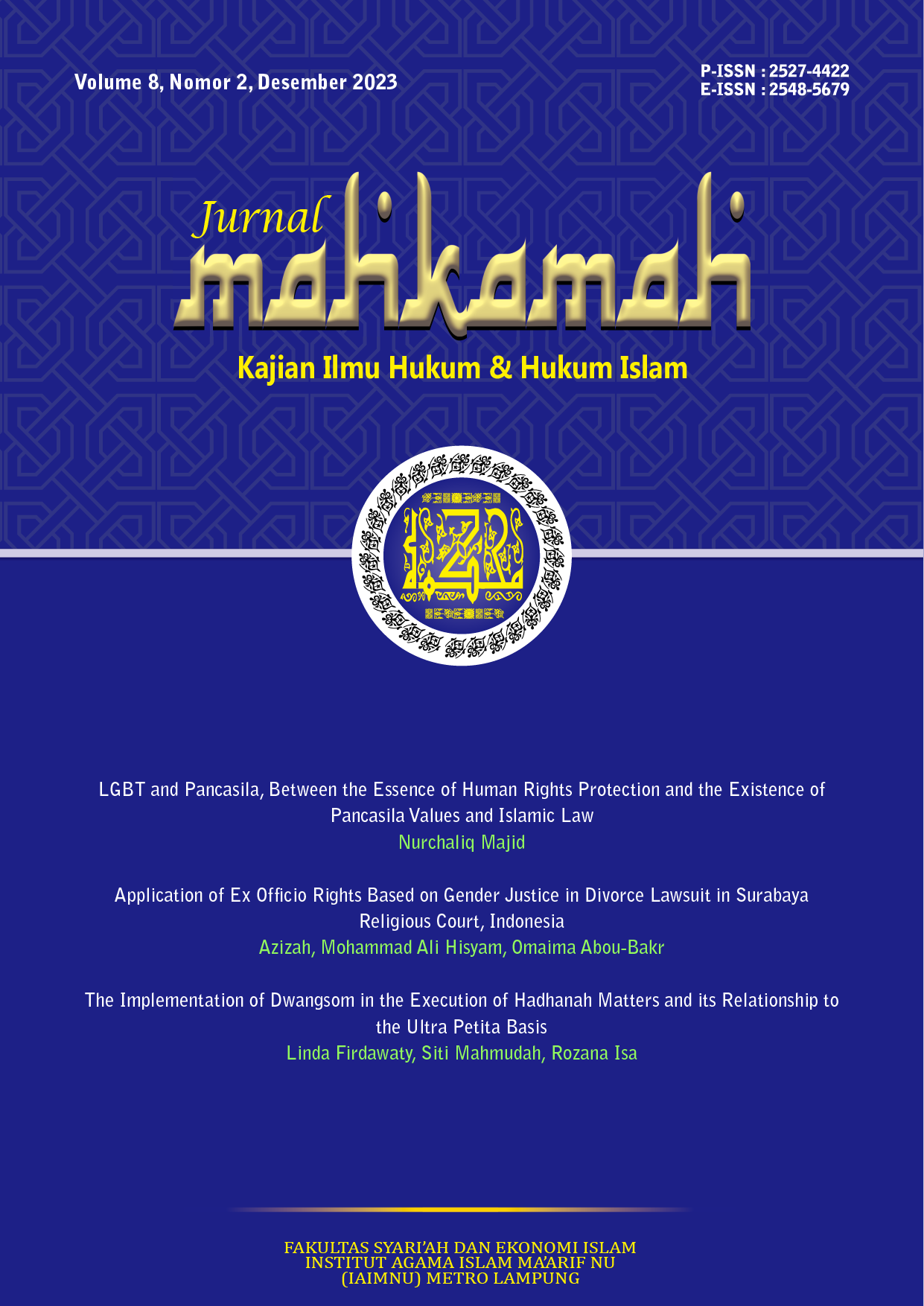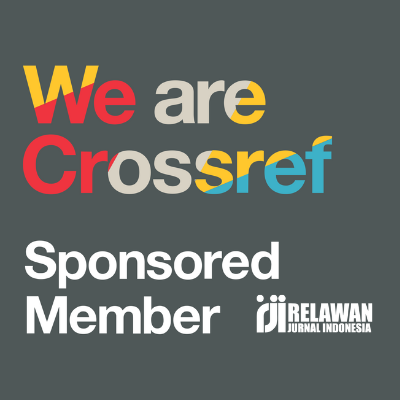Islamic Legal Values in the Angkola Batak Community Marriage Onang-Onang Dance Tradition, Sumatra, Indonesia
DOI:
https://doi.org/10.25217/jm.v8i2.3894Keywords:
Culture; Batak Angkola; Islamic LawAbstract
The issue of customary law and Islamic law is always used with a social conflict approach in society. However, the occurrence of marriage in the Angkola Batak community is interesting and unique, there is a tradition of oanng-onang poems in the marriage procession which reflects socio-cultural values. This research uses a normative juridical research type with a statute approach, namely examining norms, both from the shari'a and customary law aspects, and a comparative approach, namely a comparative approach between customary law and shari'a and the source of legal material in the form of nash. The results of this study show that the meaning of the Onang-Onang poem is an expression of heart longing for the mother (parents) and her lover, but it is also used in happy situations, including traditional ceremonies and contains religious values contained during the onang-onang tradition procession. Meanwhile, the authors argue that the validity of the tradition is not only socio-cultural but the religious value in Islamic law is inseparable from the role of parents and family, as well as relatives who become educational spaces in instilling attitudes and behavior in line with Islamic teachings, namely Q.S. Luqman verse 17.
References
Abd. Rahman Dalimunte dan Sondah Pohan. (1985). Adat Daerah Tapanuli Selatan Surat Tumbago Holing.
Adeney-Risakotta, B. (2016). Traditional, Islamic and National Law in the Experience of Indonesian Muslim Women†. Islam and Christian-Muslim Relations, 27(3). https://doi.org/10.1080/09596410.2016.1186422
Andarini, D. (2017). Pergeseran Fungsi Onang-Onang Dalam Upacara Perkawinan Batak Angkola di Desa Pargarutan Julu Kecamatan Angkola Timur Kabupaten Tapanuli Selatan. UNIMED.
Anggraini, D. (2015). The Impact of Religious and Customary Laws and Practices on Women’s Inheritance Rights in Indonesia. Sajogyo Institute.
Arifin, A. S., Faiz, M. F., & Hakim, M. L. (2023). Aligning religious law and state law: negotiating legal Muslim marriage in Pasuruan, East Java, by Muhammad Latif Fauzi, Leiden, Boston, Brill, 2023, 236 pp.,€ 69.00 (Paperback), ISBN 978-90-04-51610-6. Taylor & Francis.
Bourdieu, P. (2020). Outline of a Theory of Practice. In The new social theory reader (pp. 80–86). Routledge.
Bukido, R., Harun, N., Gunawan, E., & Mantu, R. (2022). Harmonization of customary and Islamic law in the gama tradition of the muslim Mongondow community of North Sulawesi. Ijtihad: Jurnal Wacana Hukum Islam Dan Kemanusiaan, 22(2), 239–254.
Curt Sach. (1981). Pokok-pokok Pikiran dan Metode (terjemahan Drs. Taslimuddin Dt. Tungga). Akademi Seni Karawitan Indonesia.
Daulay, I. R. (2015). Nilai-Nilai Edukatif dalam Lirik Nyanyian Onang-Onang Pada Acara Pernikahan Suku Batak Angkola Di Kabupaten Tapanuli Selatan. Jurnal Obsesi: Jurnal Pendidikan Anak Usia Dini, 1(2), 141–152.
Departemen Agama RI. (2019). Al-Qur’an dan Terjemahannya. Yayasan Penyelenggaran Penerjemah Al-Qur’an.
Faiz, A. K., & Izzuddin, A. (2022). Between State Law and Islamic Law : The Practice of Divorce Outside the Situbondo Religious Courts , Indonesia Antara Hukum Negara dan Hukum Islam : Praktik Perceraian di Luar Pengadilan Agama Situbondo , Indonesia. 3(2), 176–192. https://doi.org/10.24260/jil.v3i2.848
Grijns, M., & Horii, H. (2018). Child marriage in a village in West Java (Indonesia): Compromises between legal obligations and religious concerns. Asian Journal of Law and Society, 5(2), 453–466.
Hasbullah. (2009). Dasar-Dasar Ilmu Pendidikan. Rajawali Pers.
Hooker, M. B. (2020). Adat and Islam in Malaya. Bijdragen Tot de Taal-, Land- En Volkenkunde / Journal of the Humanities and Social Sciences of Southeast Asia, 130(1). https://doi.org/10.1163/22134379-90002707
Hutasoit, S. R. (2015). Interaksi Simbol Tortor Namora Pule Dalam Upacara Horja Godang Haroan Boru Pada Masyarakat Angkola di Kota Padangsidimpuan. UNIMED.
Lubis, A. A. A. M. R., & Suhri, M. A. K. (2020). Relasi Hukum Islam dan Adat dalam Tradisi Pamogih pada Perkawinan Masyarakat Muslim Bondowoso. Volksgeist: Jurnal Ilmu Hukum Dan Konstitusi, 45–63.
Mawaddah, F. (2021). The Meanings of The Philosophy of Symbol of The Patuaekkon Tradition In The Mandailing Muslim Bataknesse Community on The Northern Border of West Sumatra. Islam Transformatif: Journal of Islamic Studies, 5(2), 172–188.
Muhammad Adib Alfarisi Muhammad Jihadul Hayat, dan A. R. H. (2023). “Solving Pregnancy out-of-Wedlock:’Dual Validity’of Ngampang Marriage among Dayak Muslim Community in Sintang, Indonesia.” Journal Islamic Law, 123.
Nasir, M. A. (2020). Religion, law, and identity: contending authorities on interfaith marriage in Lombok, Indonesia. Islam and Christian–Muslim Relations, 31(2), 131–150.
Nasution, P. (2005). Adat budaya Mandailing dalam tantangan zaman. FORKALA Prov. Sum. Utara.
Peter Radan, Denise Meyerson, and Rosalind F. Atherton, eds. (2004). Law and Religion. Routledge.
Rajab, K. (2011). Psikologi Ibadah Memakmurkan Kerajaan Ilahi di Hati Manusia. Jakarta: Sinar Grafika Offset, 91–95.
Ratno Lukito. (1997). “Islamic Law and Adat Encounter: The Experience of Indonesia.” McGill University.
Santoso, D., Jafar, W. A., Nasrudin, M., Asmara, M., & Fauzan, F. (2022). Harmony of religion and culture: fiqh munākahat perspective on the Gayo marriage custom. Ijtihad: Jurnal Wacana Hukum Islam Dan Kemanusiaan, 22(2), 199–218.
Siregar, R. S. D. (2022). Upacara Margondang Dan Tor-Tor Batak Angkola Ditinjau Dari Perspektif Pendidikan Islam. Pendidikan Agama Islam, 2(1), 123–139.
Turner, B. S. (2011). Pierre Bourdieu and the sociology of religion. The Legacy of Pierre Bourdieu: Critical Essays, 223–246.
Z. Pangaduan Lubis. (1987). Penelitian Tesktual Dalam Jeir (makalah).
Downloads
Published
How to Cite
Issue
Section
License
Copyright (c) 2023 Padlan Padil Simamora

This work is licensed under a Creative Commons Attribution-ShareAlike 4.0 International License.
This work is licensed under a Creative Commons Attribution-ShareAlike 4.0 International License.
Authors retain copyright and grant the Jurnal Mahkamah : Kajian Ilmu Hukum Dan Hukum Islam right of first publication with the work simultaneously licensed under a Creative Commons Attribution License (CC BY-SA 4.0) that allows others to share (copy and redistribute the material in any medium or format) and adapt (remix, transform, and build upon the material) the work for any purpose, even commercially with an acknowledgment of the work's authorship and initial publication in Jurnal Mahkamah : Kajian Ilmu Hukum Dan Hukum Islam.
Authors are able to enter into separate, additional contractual arrangements for the non-exclusive distribution of the journal's published version of the work (e.g., post it to an institutional repository or publish it in a book), with an acknowledgment of its initial publication in Jurnal Mahkamah : Kajian Ilmu Hukum Dan Hukum Islam.
Authors are permitted and encouraged to post their work online (e.g., in institutional repositories or on their website) prior to and during the submission process, as it can lead to productive exchanges, as well as earlier and greater citation of published work (See The Effect of Open Access).








